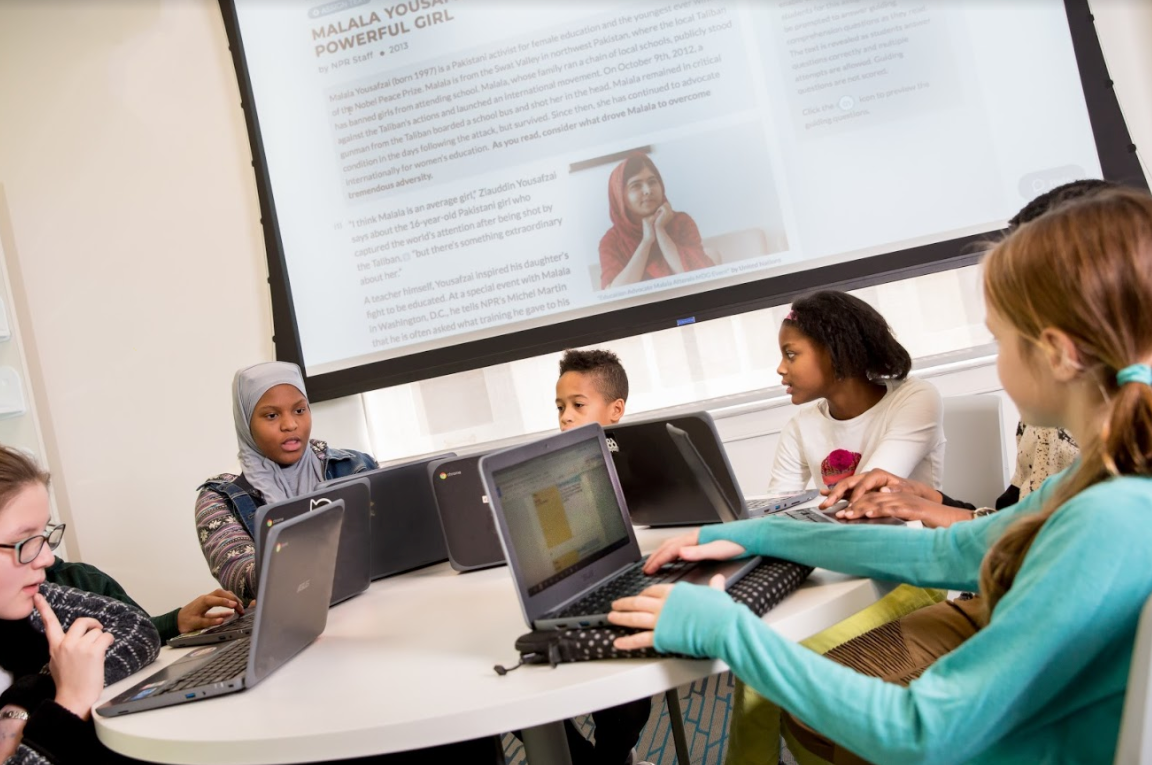CommonLit was founded in 2013 with the goal of providing every student in America with access to free and first-class reading and writing instruction. Since then, CommonLit.org’s free resources have reached students and teachers in over 75,000 schools across the United States. Third-party research has shown that CommonLit is succeeding at its mission: CommonLit disproportionally serves students in low-income schools and has a special positive effect for at-risk students and students with disabilities.
From the very beginning, CommonLit’s team developed its website and curricular resources with all students in mind. Our website and digital tools were intentionally designed to be accessible for low-income and rural communities, students with disabilities, and English Language Learners.
The following guide is for educators, schools, districts, and states who are considering adopting CommonLit as part of an inclusive and accessible remote learning plan:
Differentiation Tools to Support All Students
Embedded within each CommonLit lesson, we provide tools that improve accessibility for diverse learners. These features include scaffolded comprehension questions, translation, digital annotation tools, embedded vocabulary support, and text-to-speech read aloud. All of these features are free to teachers, students, and families.
You can read all about CommonLit’s tools for differentiation here.
Lessons in English and Spanish
CommonLit currently provides over 1,500 English-language and over 500 Spanish-language lessons for grades 3–12. CommonLit also offers dozens of lessons that are available in both English and Spanish. This resource is designed to support English Language Learners and non-native English speakers. We have also translated COVID-19 resources into Spanish.
Translation Tool: 30+ Languages
CommonLit’s reading lessons including the texts, questions, and supporting materials can also be digitally translated into over 30 different languages including Spanish, French, and Arabic.

Mobile-Optimized Experience for Teachers and Students
CommonLit’s reading program is optimized for computers and mobile devices. When using CommonLit on a mobile device, students can log in, read passages, answer comprehension questions, and track their own progress.
At CommonLit, we have prioritized developing a mobile-compatible platform because we know that rural communities and in low-income households are more likely to have consistent internet access through their cell phone than through broadband.
Freely Accessible for Teachers, Families, and Students
CommonLit’s literacy lessons and digital platform are and will always be free for students and teachers. Free and open access is core to CommonLit’s nonprofit status. Check out this blog post from CommonLit’s Founder and CEO, Michelle Brown, who explains the motivation for creating an organization with this specific charitable mission.
“Having taught in high-poverty schools, I deeply understand how important it is that this resource remains 100% free … If we charged teachers for CommonLit, we would be doing a grave injustice to students because many teachers, especially those in high-poverty areas, simply can’t afford to pay for more tools.”
— Michelle Brown, Founder and CEO of CommonLit
Available in Print & Digital Formats
CommonLit currently offers over 2,000 reading and writing lessons. Each of these lessons can be assigned digitally through CommonLit’s online platform and nearly all of CommonLit’s lessons are downloadable and can be printed and distributed for educational use.
Inclusive and Diverse Content
CommonLit’s reading program is used in classrooms across the United States. As such, the diversity of American classrooms is reflected in our curriculum materials. To diversify its library, CommonLit has partnered with over 400 authors and publishers. Some of our partners include contemporary authors like Nikki Grimes, Sandra Cisneros, and Julia Alvarez.
Manual Account Creation for Students Without Email
CommonLit provides full integrations with both Clever and Google Classroom. These integrations help make it easier for teachers to instantly create student accounts for their classes.
However, CommonLit also allows individual teachers to create classes and share a class code with their students. Using this method, students only need to provide their first and last name. Students without email addresses can still use CommonLit.

24/7 Technical Support for Teachers and Families
CommonLit’s customer support team is available around the clock to answer technical and non-technical questions through live chat and email. We offer this technical support service at no-charge to all CommonLit users with a free account. Parents and guardians with an account can simply click the “HELP” button in the corner of our website to get access to one of our customer support representatives.

Next Steps
As digital learning is becoming an even more critical part of schools’ learning plans in light of COVID-19 school closures, CommonLit will continue to prioritize the development of features that make it easier for students in the most marginalized communities to access our high-quality literacy resources and technology. We know that reaching the most vulnerable students is a big challenge, and we are committed to doing everything we can — it’s our mission statement.
If you would like to learn more about how CommonLit can support your team, feel free to reach out to Partnerships@CommonLit.org. We’re here to help in any way that we can.


